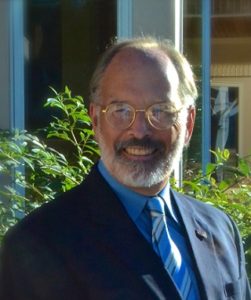The proposed U.S. Constitution offered a brand new form of government; marking a significant departure from historical precedents. First and foremost, sovereignty, or supreme authority, was placed in “We the People” rather than the state or a king. Secondly, the Constitution established a Republic where the citizens elected others to represent their interests.
The primary challenge facing the Constitutional Convention was how to establish a central government with the “energy” necessary to govern while at the same time preventing it from becoming too powerful. This was not merely a philosophical debate. The founders had lived through both extremes: an oppressive king and a fatally weak Confederation.
To address this challenge, the delegates adopted the principle of “Separation of Powers”. Instead of having the powers of the government enshrined in one person- the king- they would be separated into three branches: The Legislative (law making), The Executive ( enforcing the law) and Judiciary (interpreting the law).
To ensure that one branch didn’t acquire too much power, certain “Checks and Balances” were written into the Constitution. For instance, the Executive Branch ( the president) had the authority to enter into treaties with foreign governments, but that power could be “checked” by the Legislative Branch in the form of the U.S. Senate which had to approve that treaty by a 2/3 majority vote.
Article 2, the Executive, was one of the most hotly debated portions of the Constitution. Many of the delegates were so fearful that a strong president would lead to a tyrant that they insisted on emasculating the office. Other delegates wanted to grant the new office with enough “energy” that it could lead the central government.
As a result of this debate, much of the specifics of the powers and functions of the office were left unresolved. All the delegates believed that George Washginton would be the first president. They so respected Washington for his common sense judgment and virtue, that they left significant areas of the article vague- waiting for him to fill in the blanks through his actions.
One example of this tendency can be found in the term of the president’s office. The Constitution specifies that the president shall serve a term of four years, but does not limit the number of terms that he may serve. Washington set the tradition when he returned to private life after serving two terms. This tradition stood until 1940 when President Franklin D. Roosevelt was elected to a third term. The Washington tradition was codified in the Constitution when the Twenty-Second Amendment was ratified in 1951.
Federalism, which divides power between the central government and the states, was written into the Constitution in order to prevent the federal government from becoming too powerful. It has been a flash point of conflict when the central government tries to encroach upon state’s rights. This conflict has been in the news recently regarding the issues of emmigration, health care, and COVID vaccination mandates.
Missing from the Constitution was a statement of basic civil liberties that protected the individual from an oppressive central government. Civil Liberties advocates insisted that these rights be included before they express their support for the
Constitution. It was agreed that this Bill of Rights would be submitted to the public at a later date in the form of ten amendments. These rights included free speech, assembly, religion, and the right to bear arms.
After a contentious fight, The Constitution became the law of the land on June 21, 1788, when New Hampshire ratified it. It wasn’t until December of 1791 that the Bill of Rights were adopted.
The Constitution has served as well for 233 years. Unfortunately, a growing number of partisans and big government advocates see the Constitution as an impediment to their undemocratic vision of the future. They are insisting that the president use his “phone and a pen” to sign executive orders to circumvent the Constitution. “We the people” must adamantly oppose this assault.
As George Washington told us the only “keepers” of the Constitution are “the people”. Keeping the Constitution as the founders meant it to be is our generations biggest challenge.
Gary Knepp is Clermont County’s honorary historian and is the author of eight books about Clermont’s history. Knepp’s website is www.garyknepp.com.
